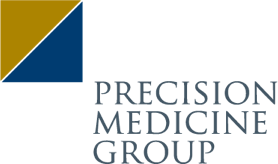The New Gold Rush: Health System-Operated Specialty Pharmacies
By Ashwin Athri
With the explosion of contract network pharmacies in the last few years, we thought the tale of the 340B gold rush was on its last page. Then came along the health system-owned specialty pharmacies to add some more pages for us to read and understand the implications for manufacturers.
With the continuous reduction of reimbursement from Medicare on high-cost specialty medications, health systems found themselves being squeezed for margin. The desire to augment the lost revenue opened up an avenue to vertically integrate and exploit the buy and bill value chain a bit deeper. A 340B-eligible site of care can now purchase product at the 340B price and get reimbursed at the normal rate without a third party, like a network pharmacy, eating into the profit share.
The challenge is that most specialty medications have a limited distribution network that can vary from 1 specialty pharmacy in-network (for a REMS program, for example) to ~15 specialty pharmacies in-network. The product availability and preferential pricing is controlled by the network with sufficient incentives for the channel partners to maintain a tight network. This means that there is a high likelihood that patients referred to the in-house specialty pharmacy may not be able to receive the medication out of the defined network.
This devil is, however, in the details! The limited distribution from a specialty distributor perspective is enforced by defining the class of trade. If a health system-owned specialty pharmacy is designated as a hospital, then there is high likelihood that they can now buy and bill that limited distributed product; thus participating in the gold rush!
This phenomenon is neither easy to detect nor enforce with the specialty distributors such as ABC, Cardinal and McKesson. The phenomenon is new enough that it’s a bit of “Wild West” out there.
The Precision IDN Master is ideally suited to help identify and build safeguard processes ensuring compliance to the limited distribution network. This is accomplished by:
- Defining what an IDN is, and what its organization structure is
- Providing relevant attributes to the various sites within the IDN to identify 340B eligibility and accreditations such as URAC and ACHC to flag sites with in-house SP capabilities
- Connectors to EDI shipment data to the IDN structure to integrate distributor data to the IDN sites
- Pharmacy insight reports that leverage patient claims to identify the treatment activity at health system owned specialty pharmacies
This will allow the analytics teams to quantify the amount of product shipped to health system owned SP that can be compared to the shipment from the SPs and total product sales. This comparison will allow identification of leakage in the network and the corresponding GTN erosion as more product is sold at 340B pricing.
Reach out to us to better understand how our data management products can help you diagnose, monitor, and act on the data you are collecting form the channel partners.
Click here to learn more about the Precision IDN Master!



